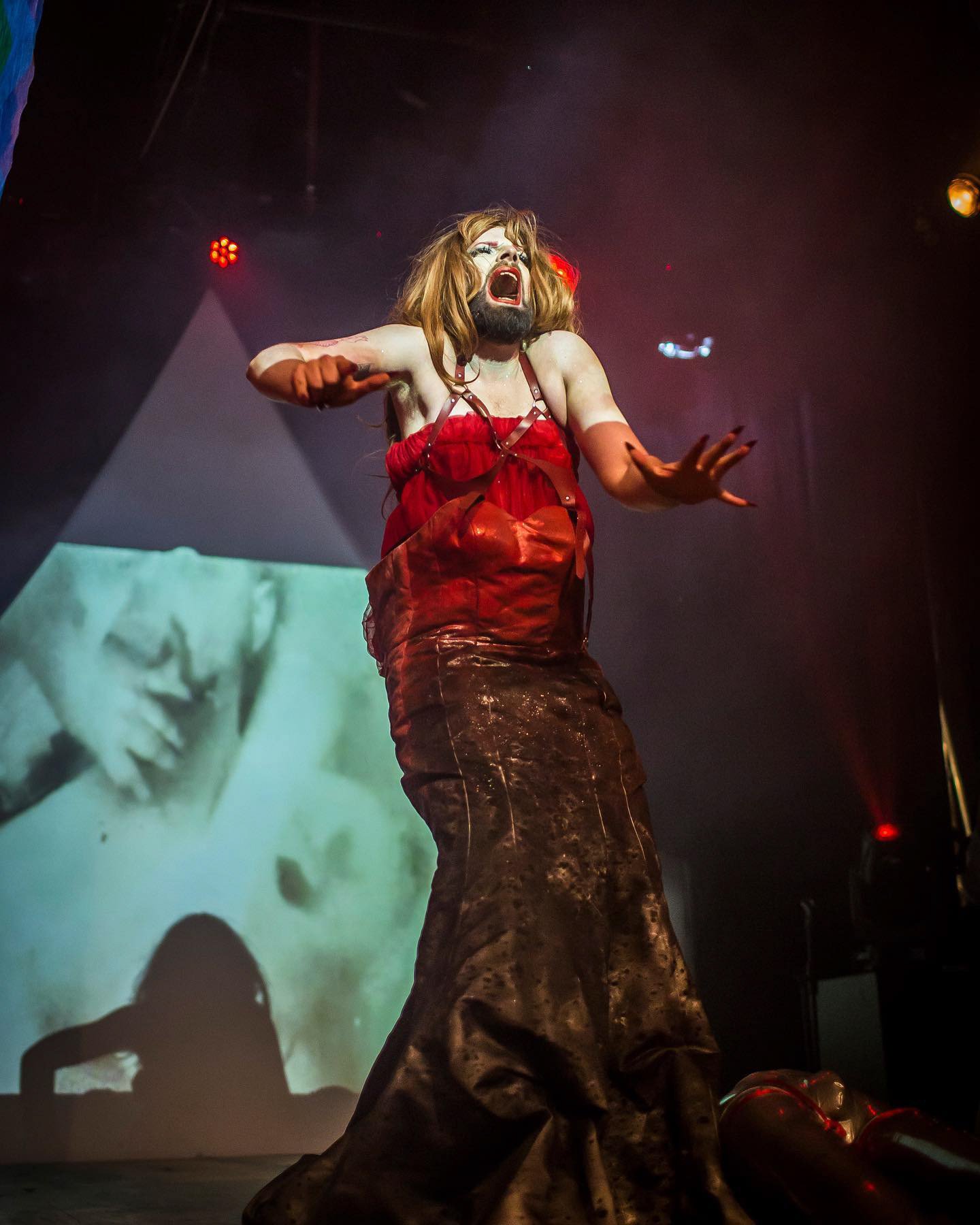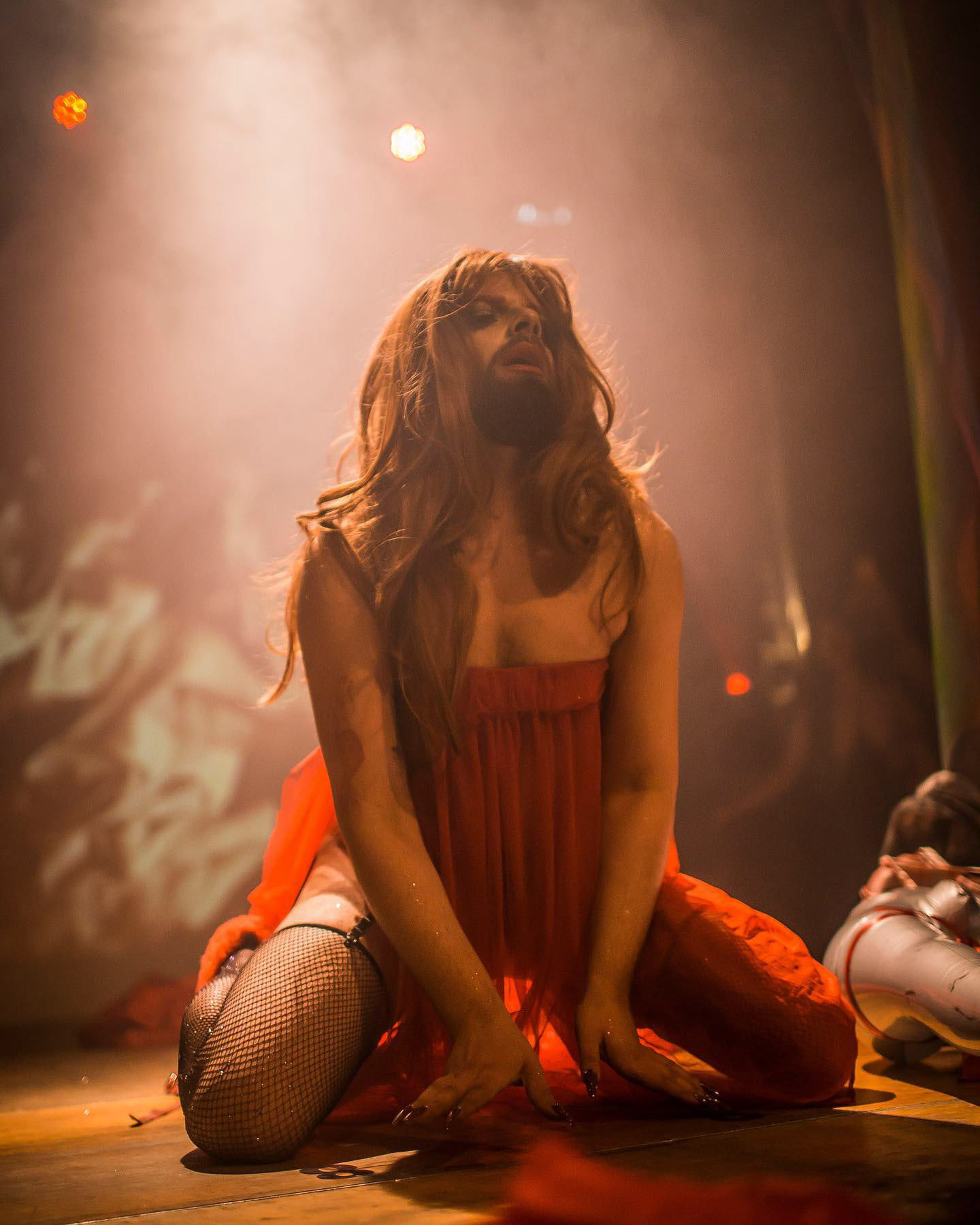












Sweet Nothing Love II is a performance that unravels the weight of attachments, the echoes of love that bind, bruise, and refuse to release. It stages the body as a battlefield of past intimacies — a site where devotion leaves bruises deeper than violence, and where freedom demands a reckoning with the ghosts that cling too tightly to the skin.
The performance unfolds through a dense visual language: silver mannequins are tethered to the body, gleaming and inert, figures of absence mistaken for presence. They hang like extensions of old desires, projections stitched into flesh. Severing them becomes an act of survival, but not a clean one — it is messy, frantic, painful. Every rupture reveals not emptiness but sediment: a history soaked into the skin.
Beneath the discarded mannequins lies a bloodstained wedding dress, not white but streaked with crimson, gray, and black — a fabric heavy with broken promises, failed sanctuaries, and the debris of love idealized as salvation. The body struggles within it, wrapped in the memory of vows made and broken. The act of shedding it becomes a ritual of unmaking, but no redemption is promised. The ruins cling even as the body pulls away.
As the space fills with Florence Welch’s voice — first the raw urgency of Sweet Nothing, then the fractured longing of My Love — the performance shifts from rupture into mourning. Movement slows into something closer to surrender. Layers of red tulle and glittered fabric envelop the body, evoking wilted roses, bruised celebrations, and the violence of beauty surviving collapse. There is no triumph here. Only the slow, grinding labor of staying alive inside what has already fallen apart.
Throughout the performance, a rear video projection plays in the background: Sweet Nothing Love I, an intimate visual work showing a different dimension of the same experience. Unlike the hyper-theatrical presence onstage, the figure in the video moves stripped of persona — exposed, vulnerable, recorded in private gestures of collapse and endurance. This ghostlike double haunts the space, creating a dialogue between spectacle and solitude, performance and memory, survival in public and survival alone.
Striptease becomes a language not of seduction but of exposure, dismantling the gaze rather than performing for it. The body moves in gestures that recall sensuality — hips swaying, arms opening — but they flicker against a backdrop of exhaustion and loss. I’m the same, I’m the same, I’m trying to change repeats through the space, Florence’s voice fraying into the air, echoing the impossible effort to shed what was inherited without consent.
Sweet Nothing Love II does not seek closure. It does not narrate a victorious release from the past. It dwells in the ongoing rupture — in the place where ghosts still reach for the living, where blood still stains the dress, where love, even when broken beyond repair, leaves marks too deep to erase. It honors the labor of severing without promising transcendence. It shows a body still tethered to what it has tried to leave behind, but moving anyway — trembling, glittered, stubborn in its unfinished becoming.